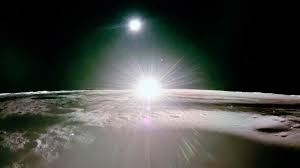A private US lunar lander has captured high-definition images of a lunar sunset, shedding light on an unexplained haze phenomenon first observed on the Moon in the 1960s.
Historic Moon Landing & Scientific Goals
Texas-based Firefly Aerospace became the first private company to successfully land a robotic spacecraft upright on the Moon earlier this month.
- The Blue Ghost lander, roughly the size of two rhinos, touched down on March 2 at Mons Latreille, a volcanic feature in Mare Crisium on the Moon’s northeastern near side.
- The lander operated until March 16, shutting down as the lunar night began.
Unraveling the Lunar Haze Mystery
NASA hopes the images will help investigate ‘horizon glow’ or ‘dust lofting’, an unusual phenomenon where lunar dust appears to float above the surface.
- Scientists theorize that lunar dust particles become electrically charged by ultraviolet radiation from the Sun, causing them to levitate.
- The phenomenon was first noticed in the 1960s by NASA’s Surveyor probes and later Apollo astronauts.
- The images will be analyzed alongside electromagnetic field and radiation sensor readings to refine theories about Moon dust behavior.
Breathtaking Lunar Images
The newly released images include:
- A lunar sunset with a green-tinged halo around the Sun.
- A view capturing Venus as a small bright dot, with Earth’s reflection appearing nearly as large as the Sun.
- A detailed image of the Moon’s surface illuminated by reflected light from nearby mountains, aiding scientists in studying light scattering on the Moon.
Additionally, on March 14, Blue Ghost recorded a total solar eclipse from the Moon’s surface, offering unprecedented high-definition imagery of the event.
Future Lunar Missions
The mission was part of NASA’s partnership with private industry to reduce costs and support Artemis, the program aiming to return astronauts to the Moon as a stepping stone for future Mars missions.
Firefly Aerospace is already incorporating lessons from Blue Ghost’s success into its upcoming lunar missions, Blue Ghost-2 and Blue Ghost-3.
While the lander was not designed to survive the extreme lunar night, Firefly’s spaceflight program director Ray Allensworth remains optimistic, saying:
“This lander has surprised me before—so who knows?”
Would you like a deeper analysis of the lunar haze mystery or insights into NASA’s Artemis program?



